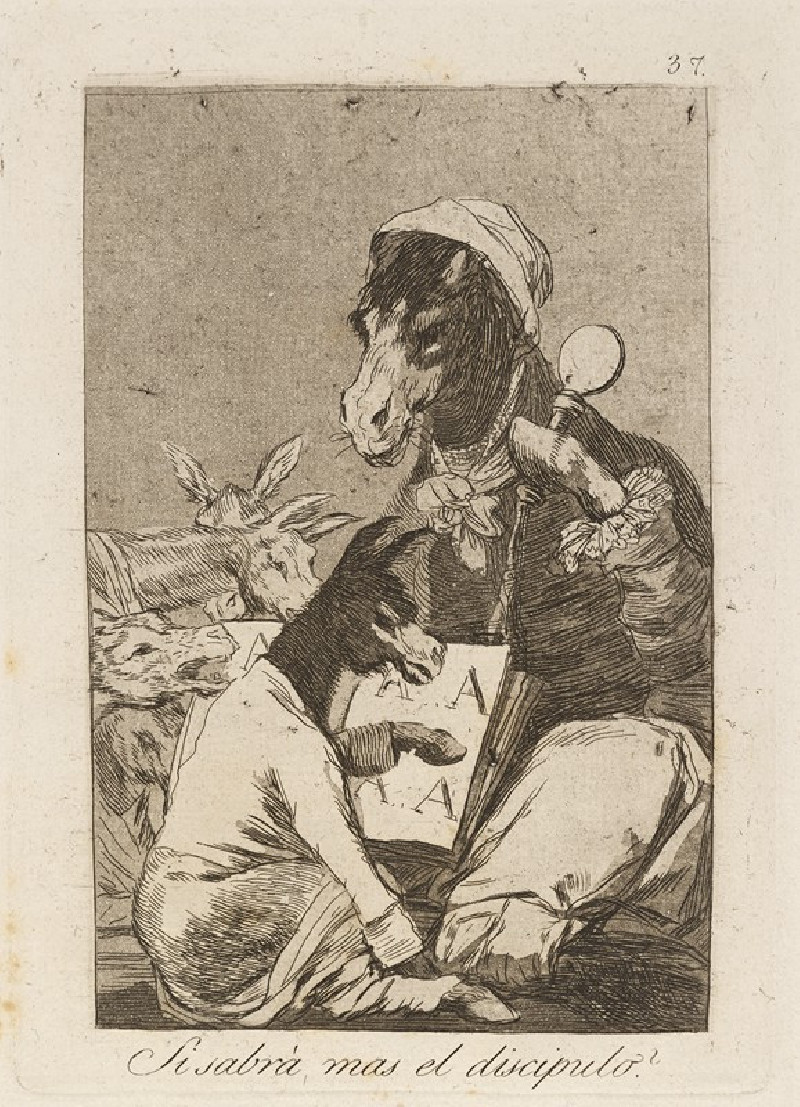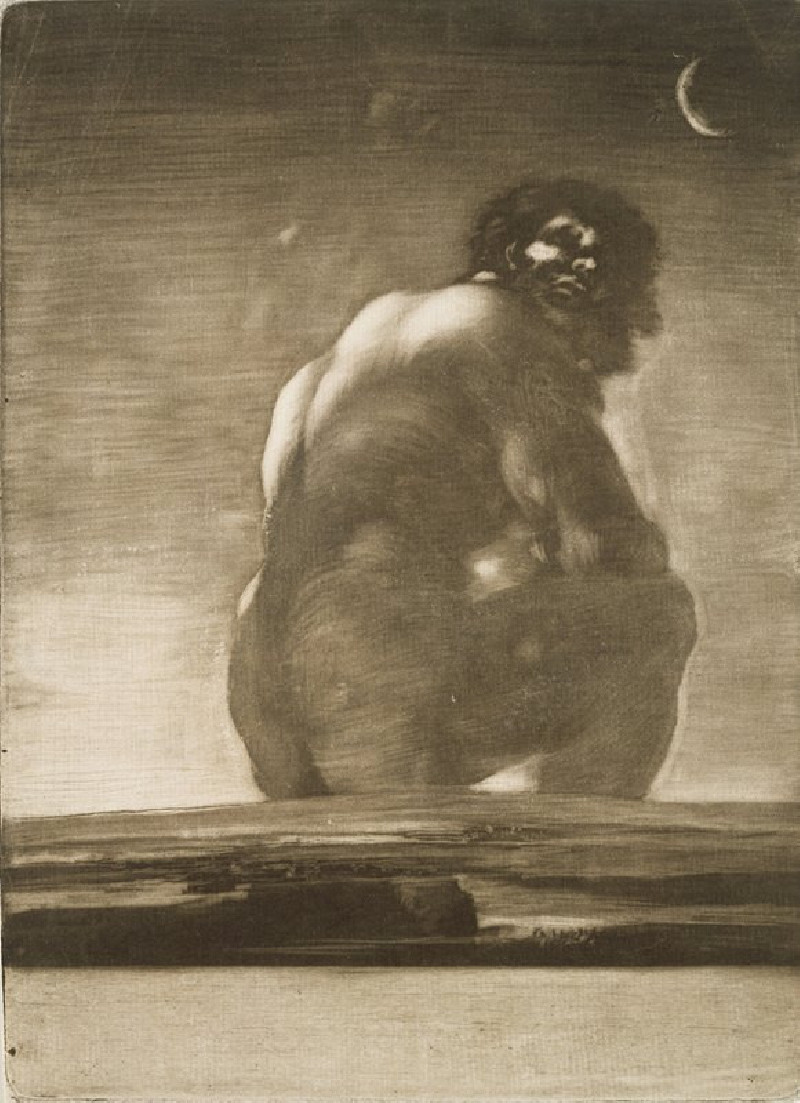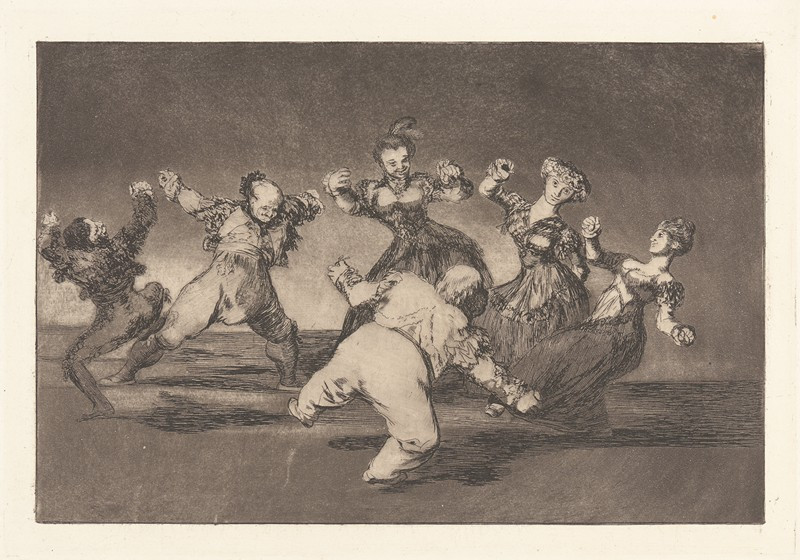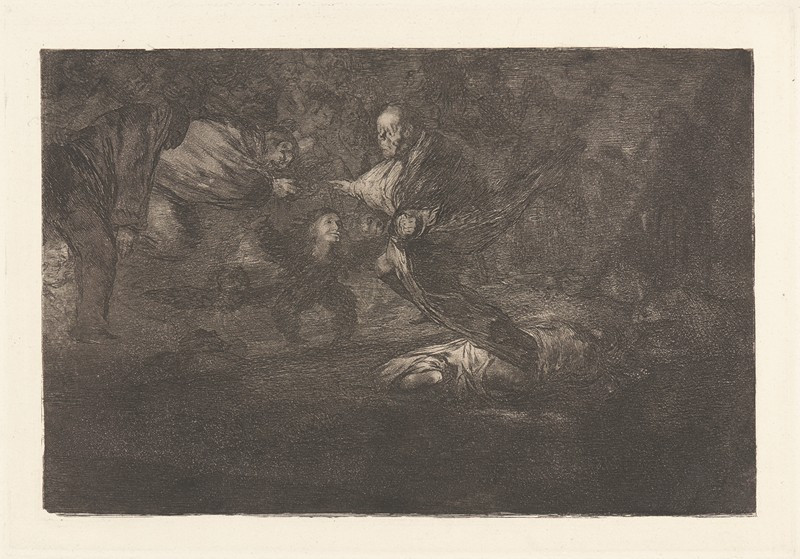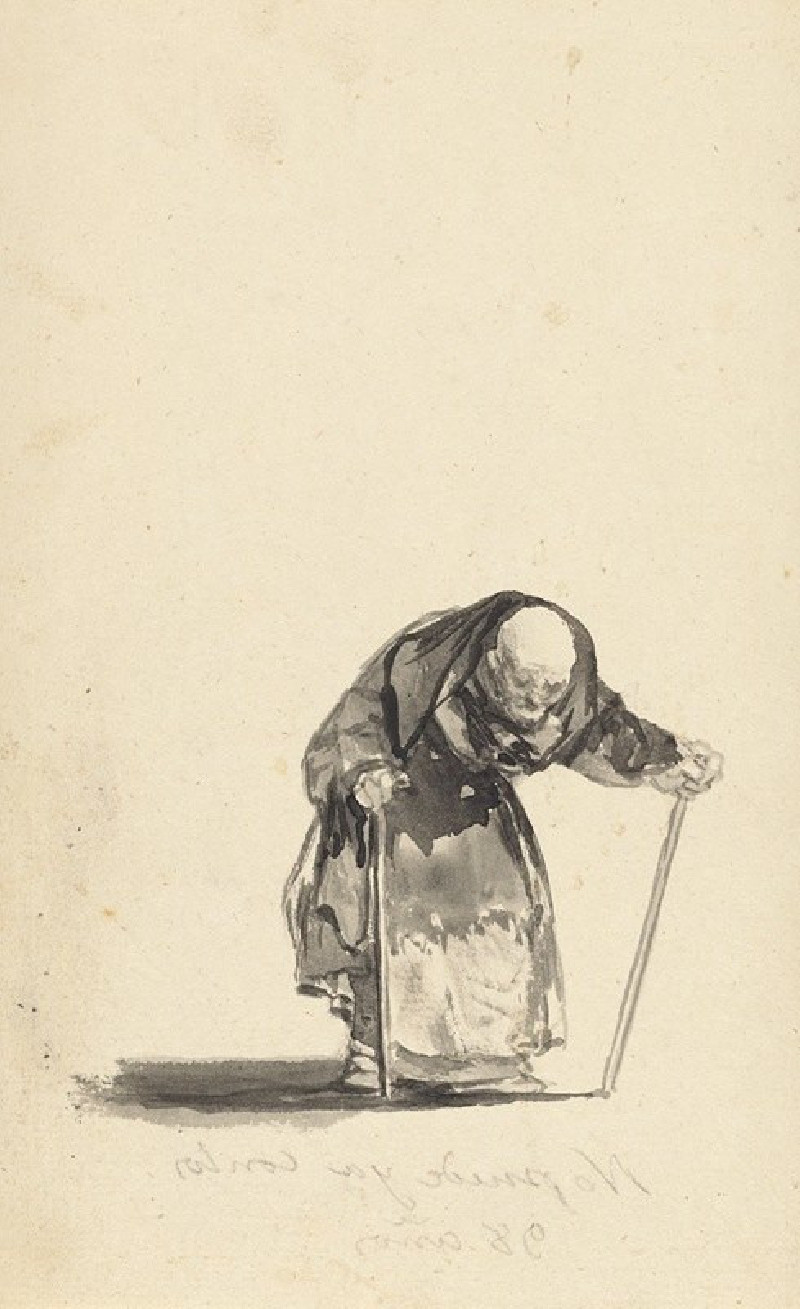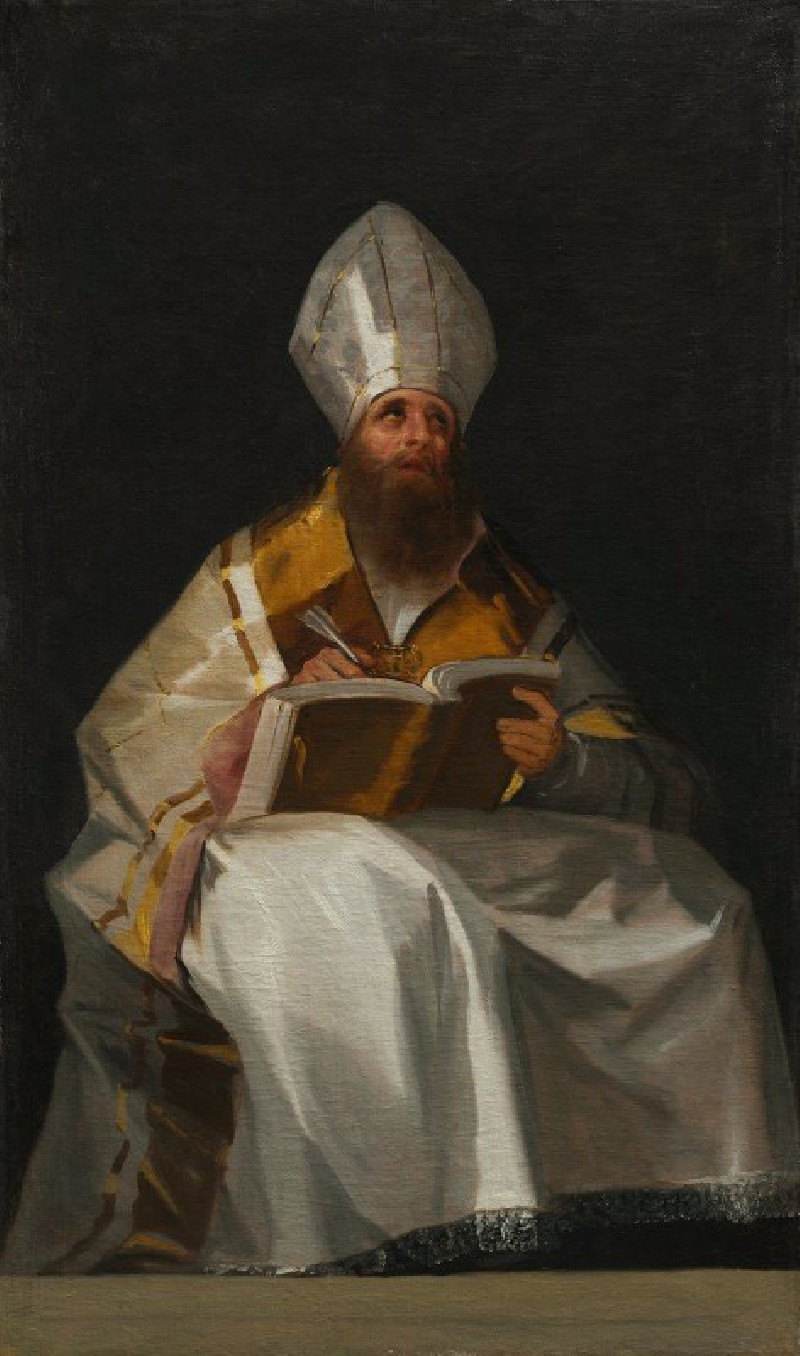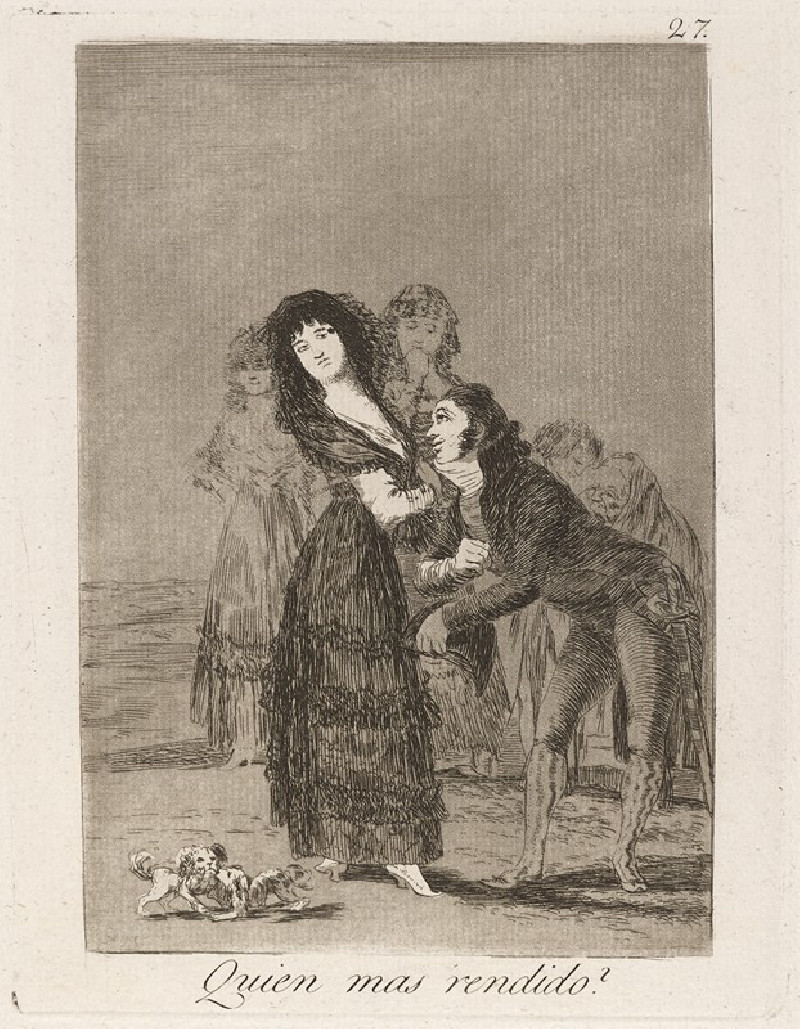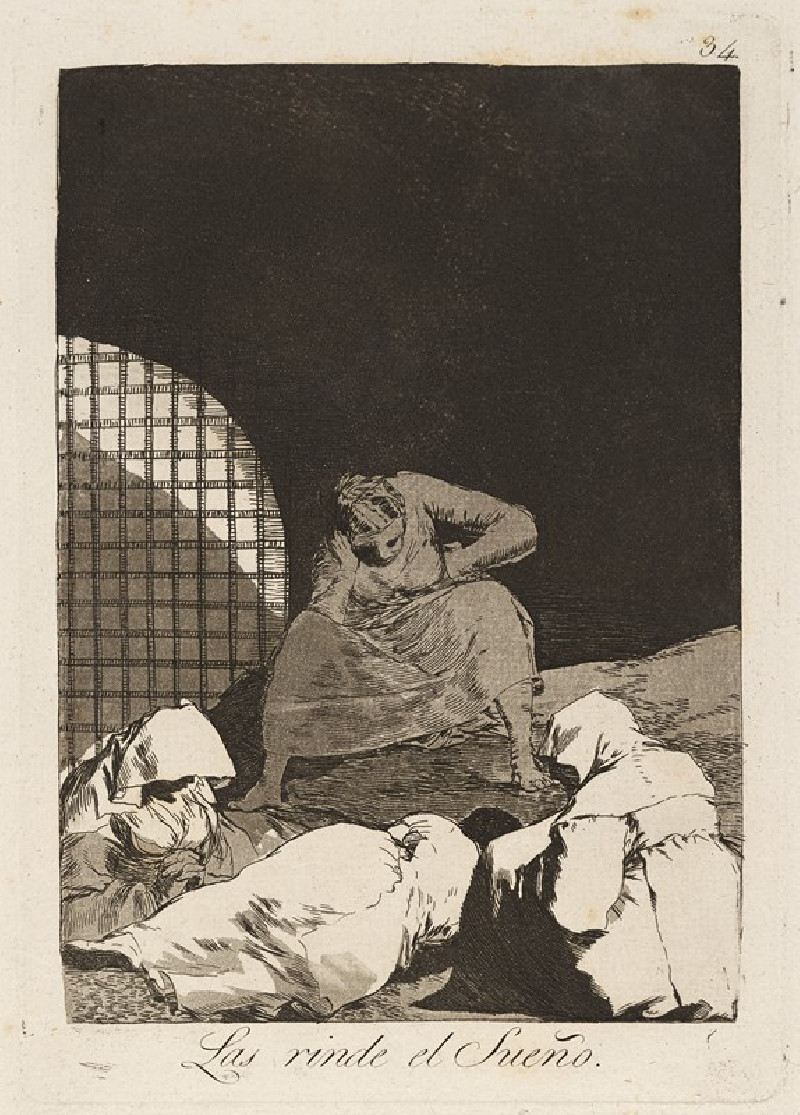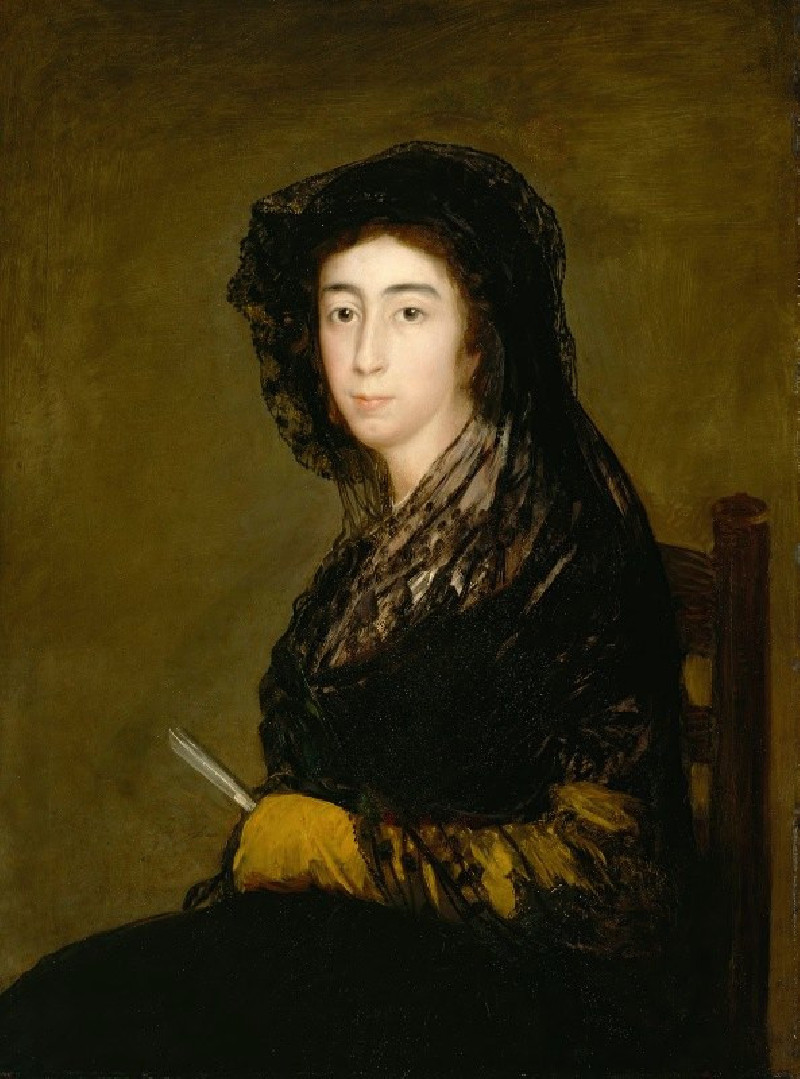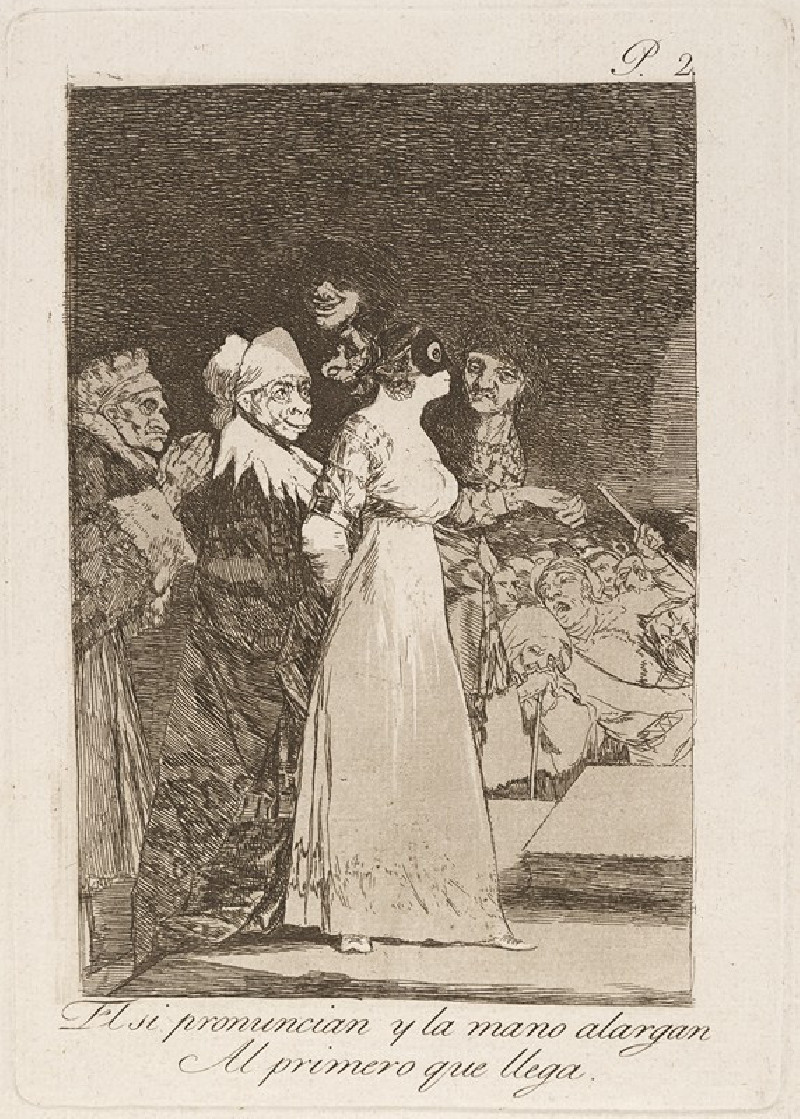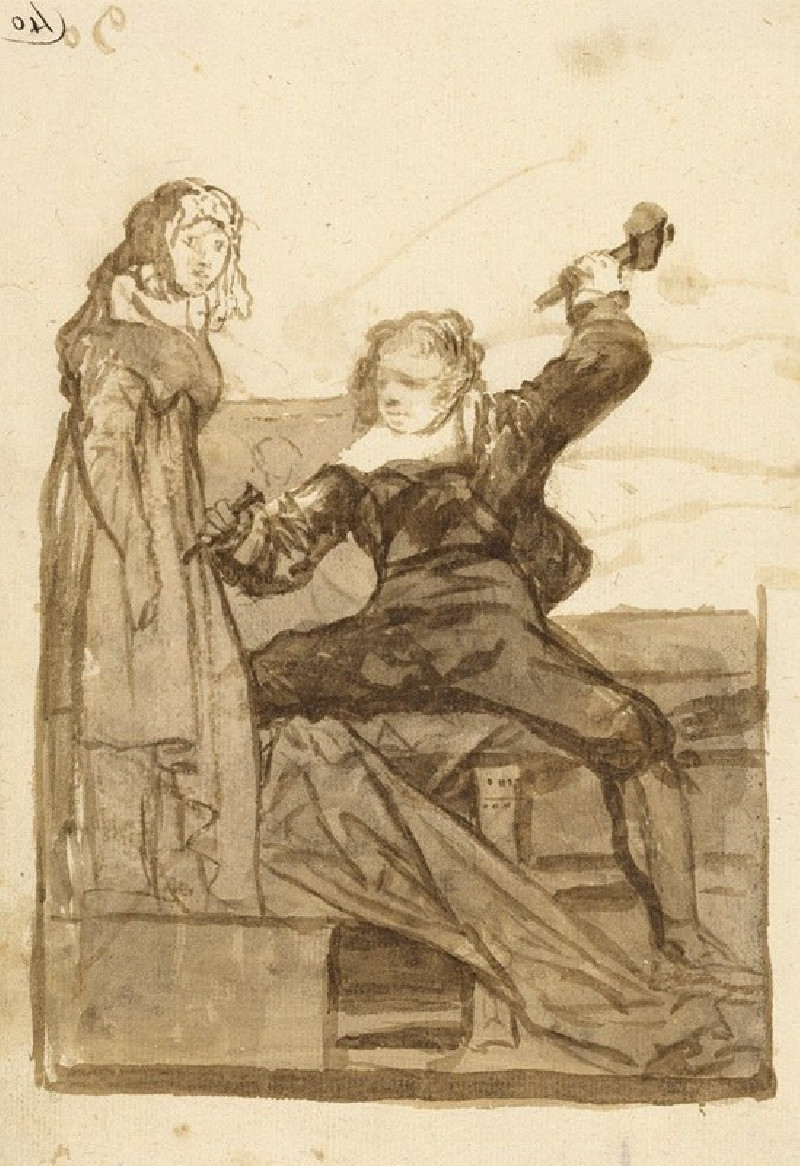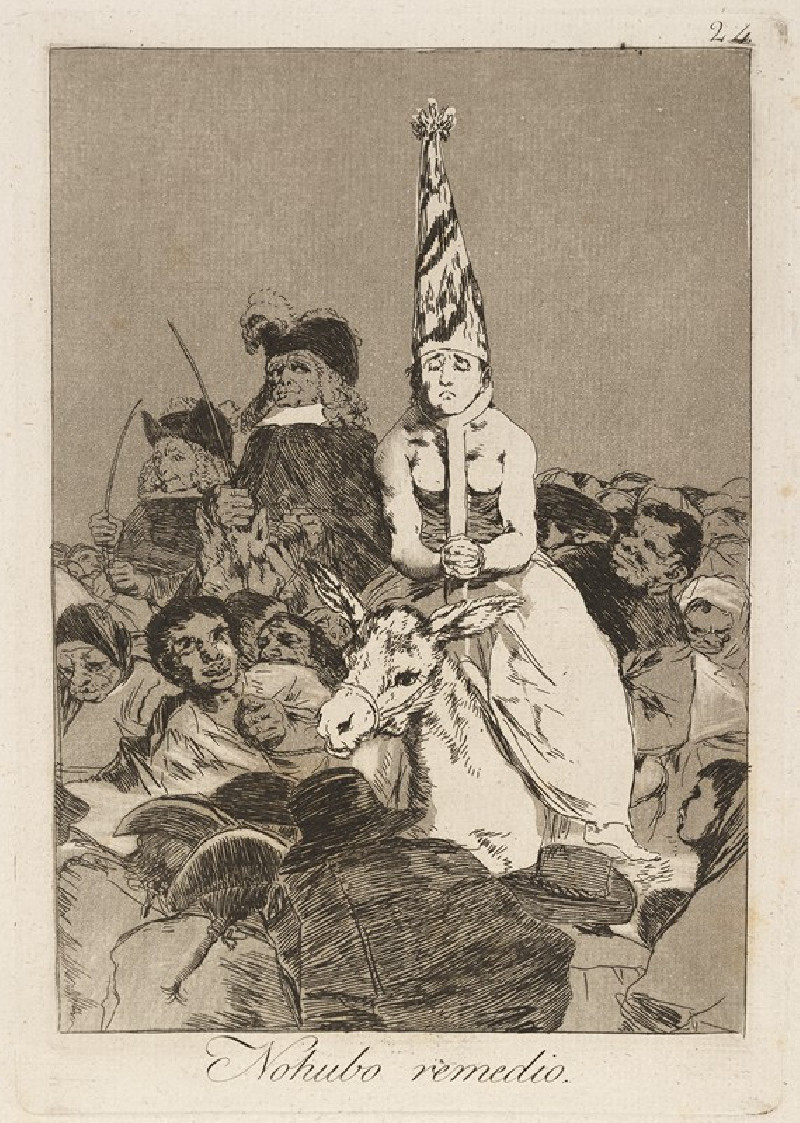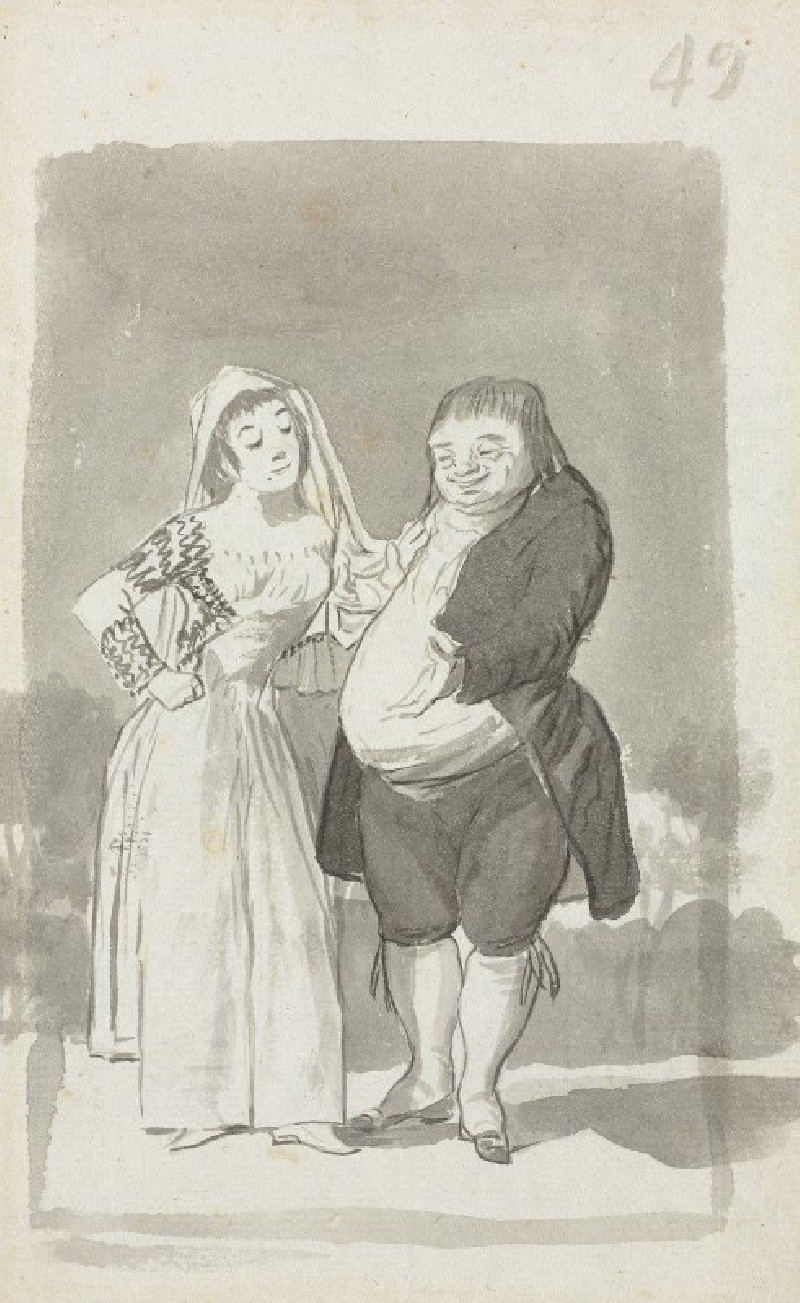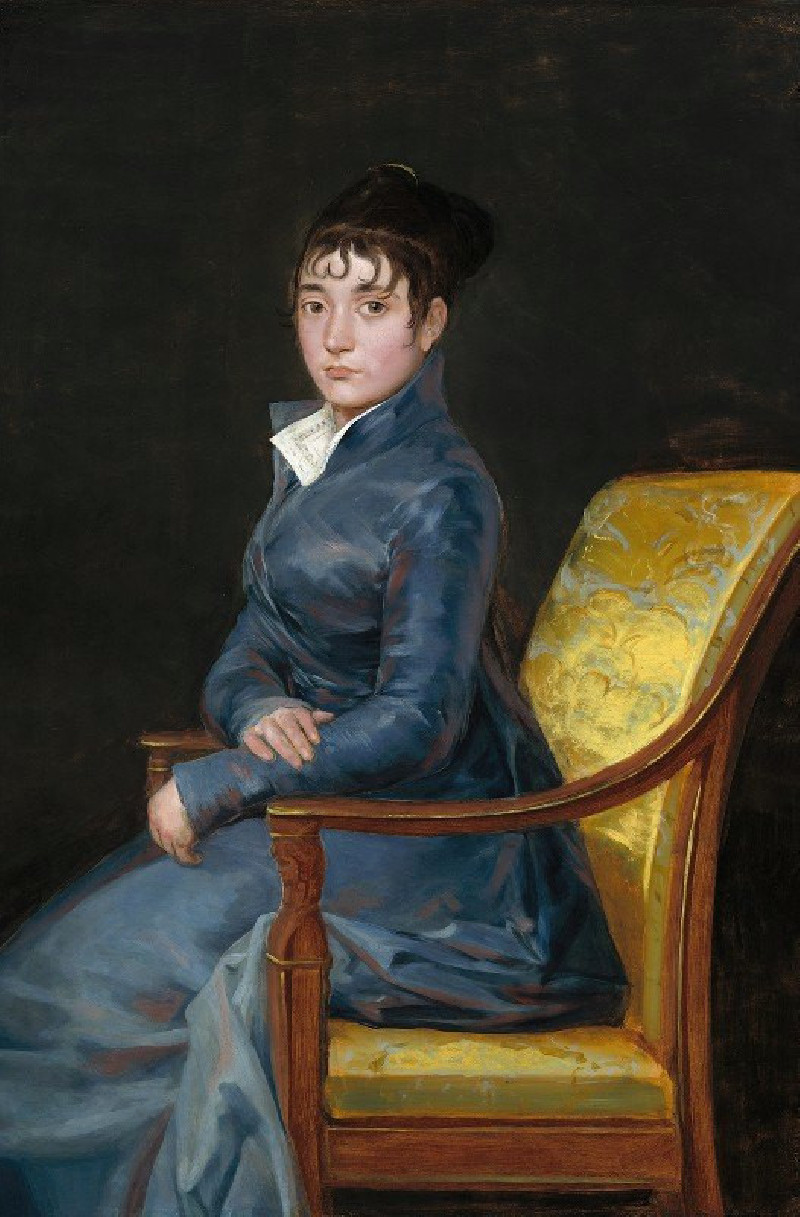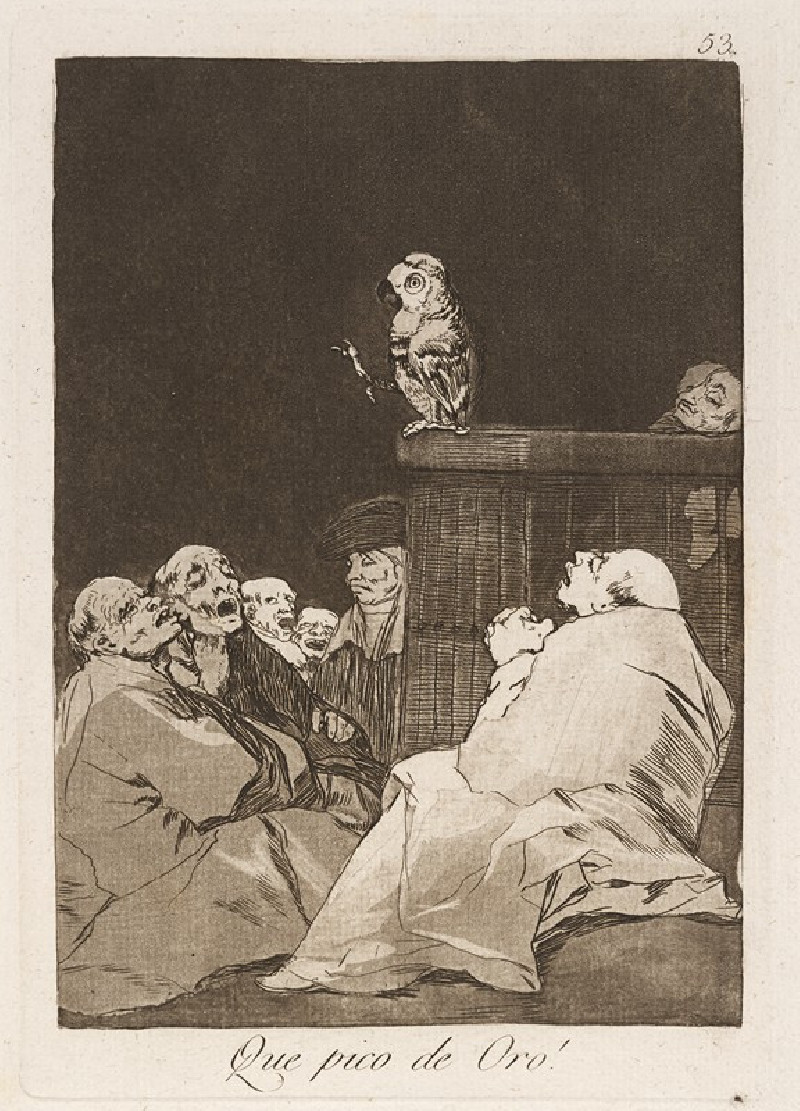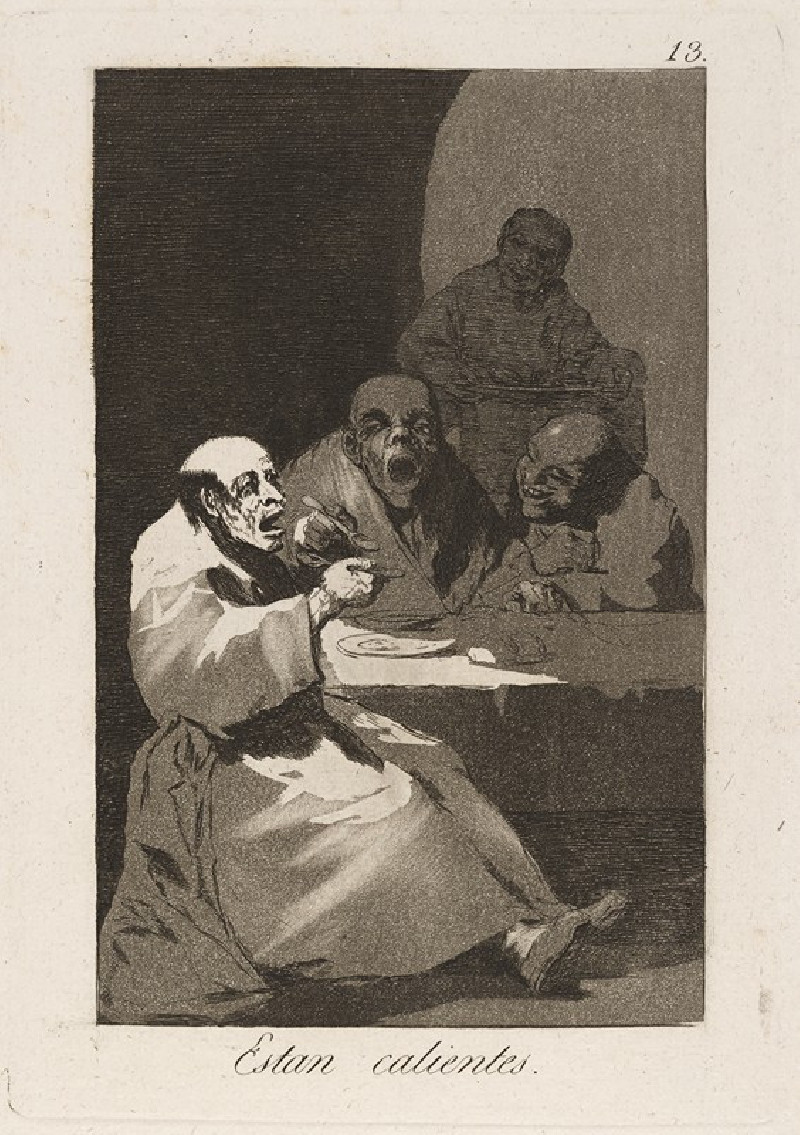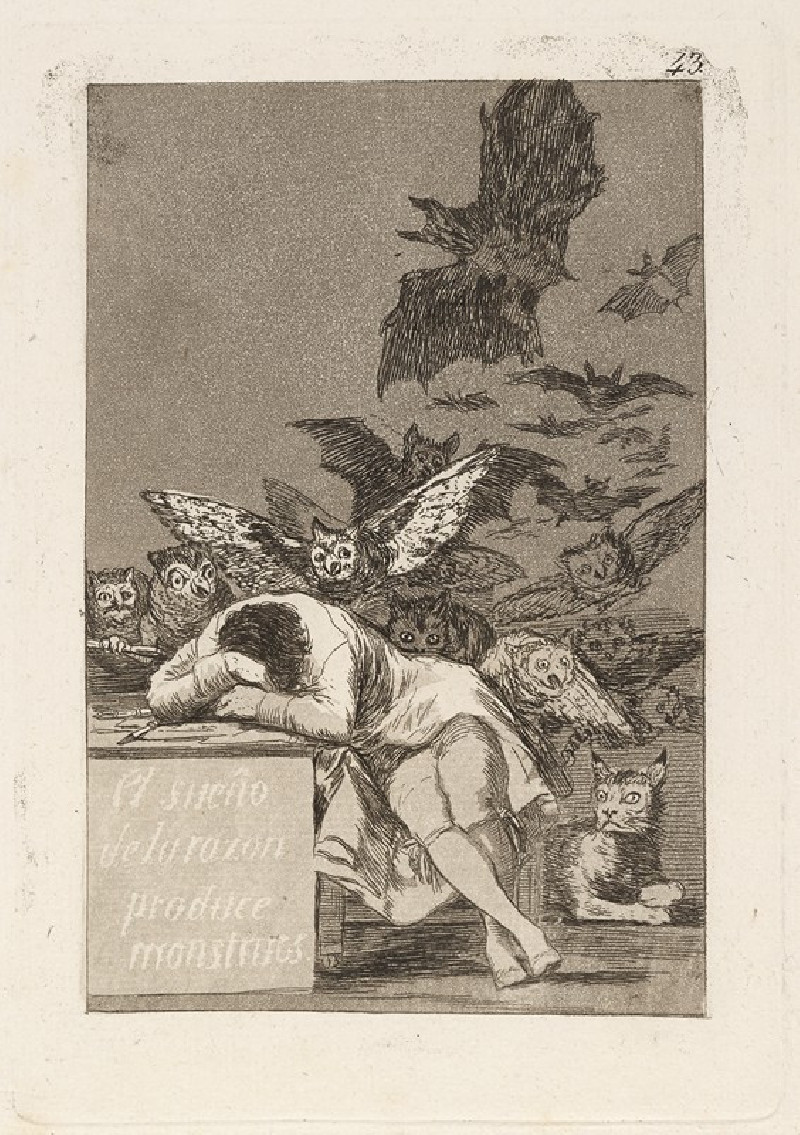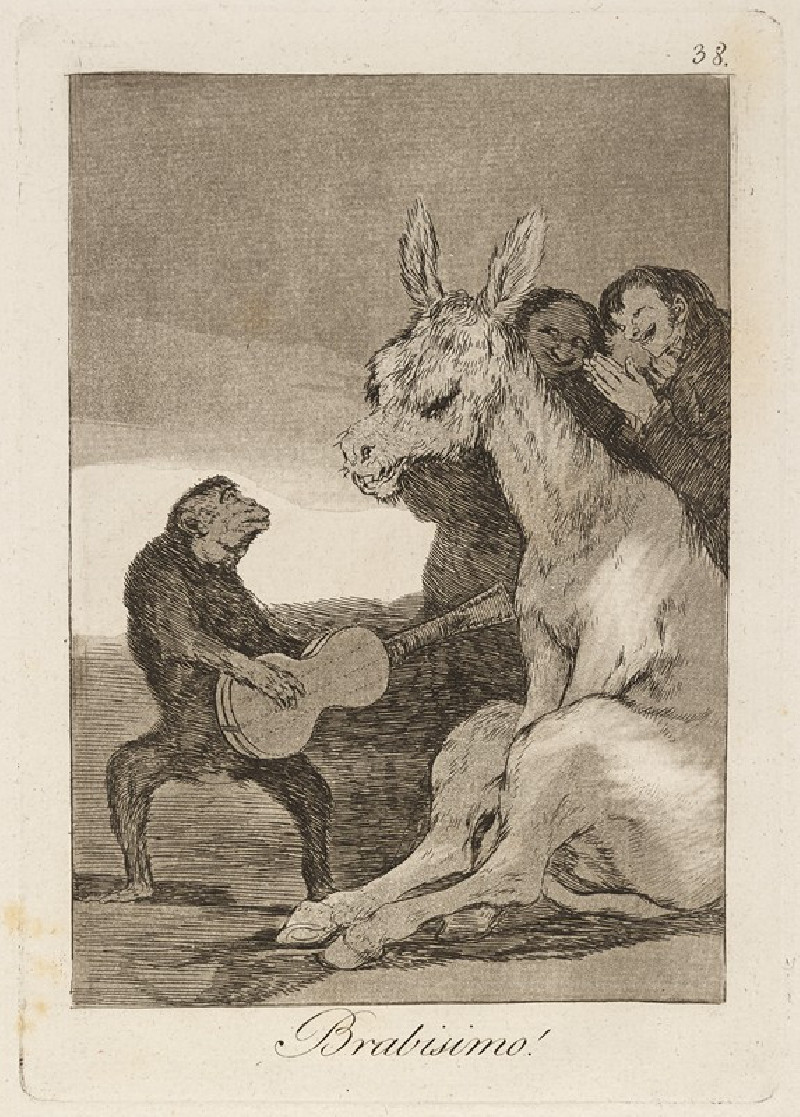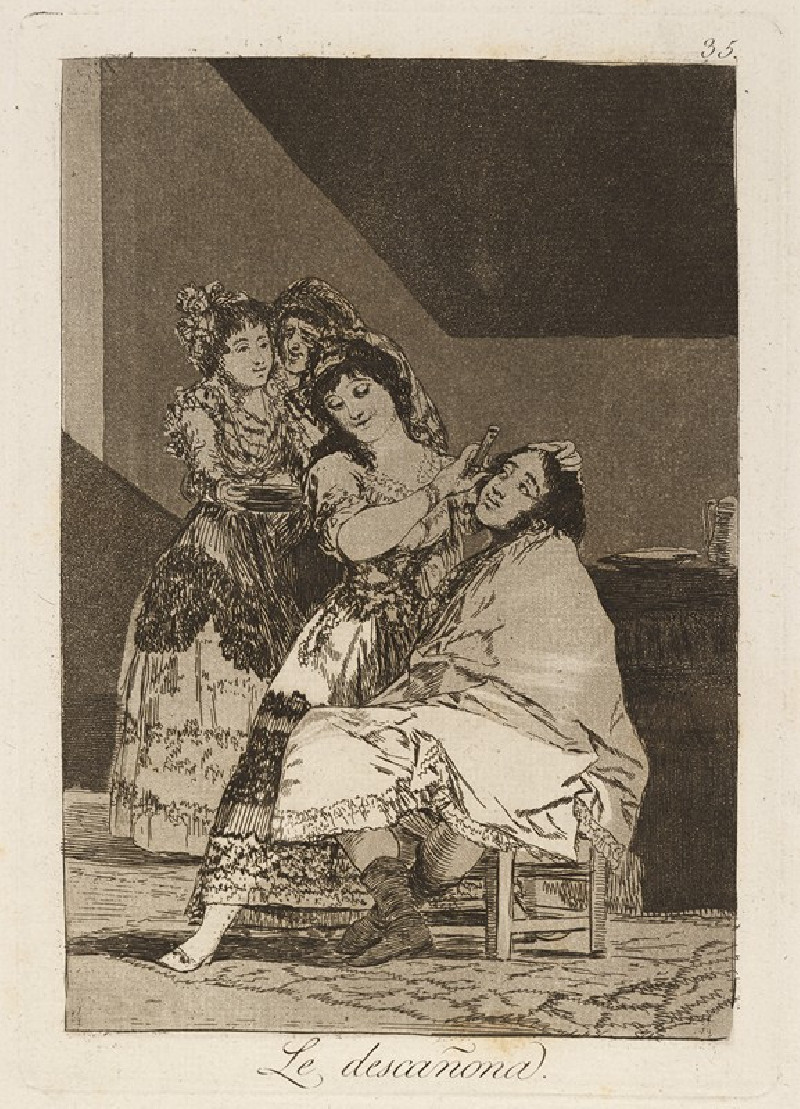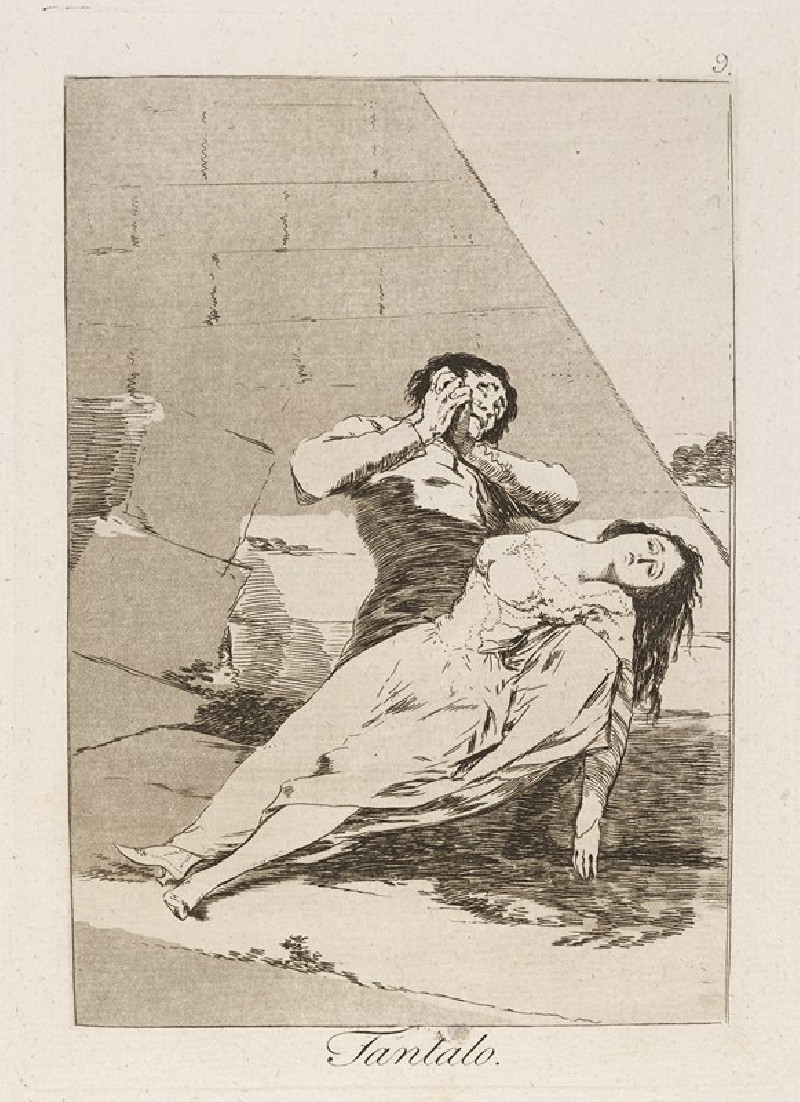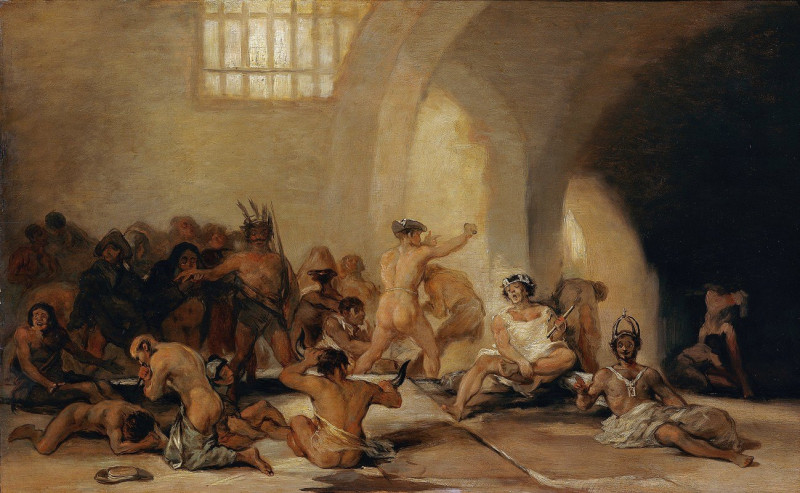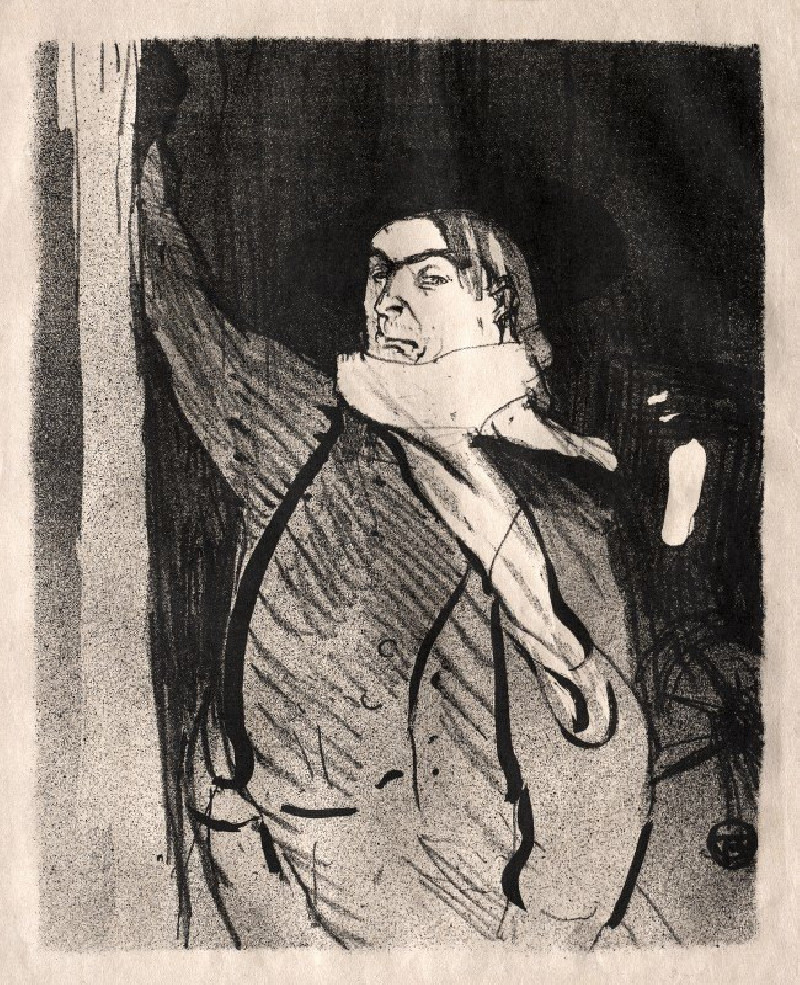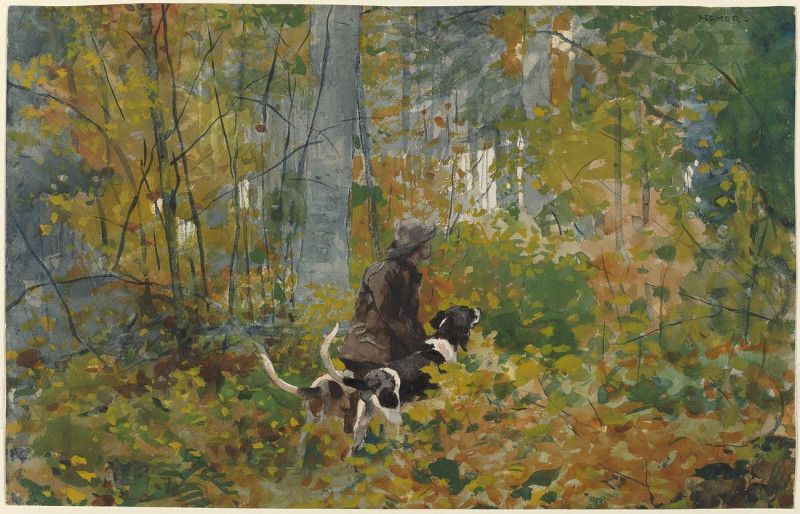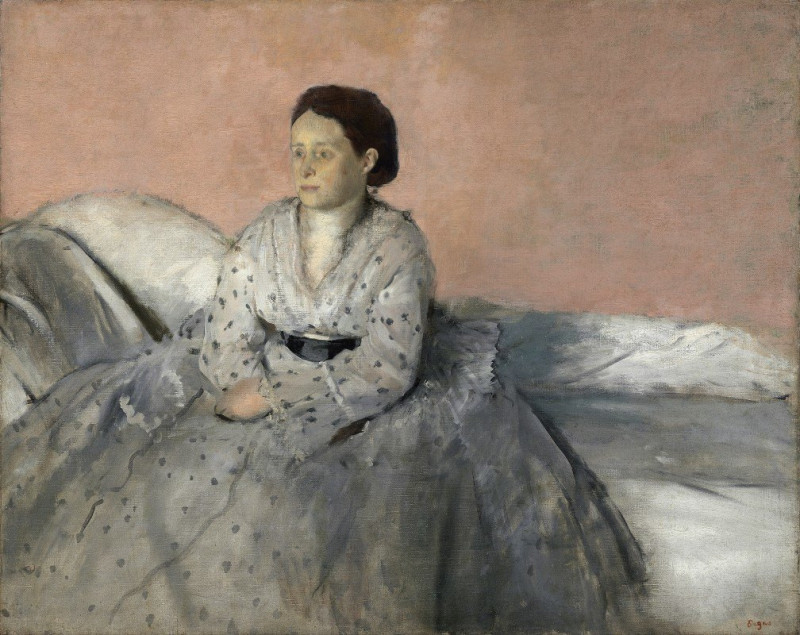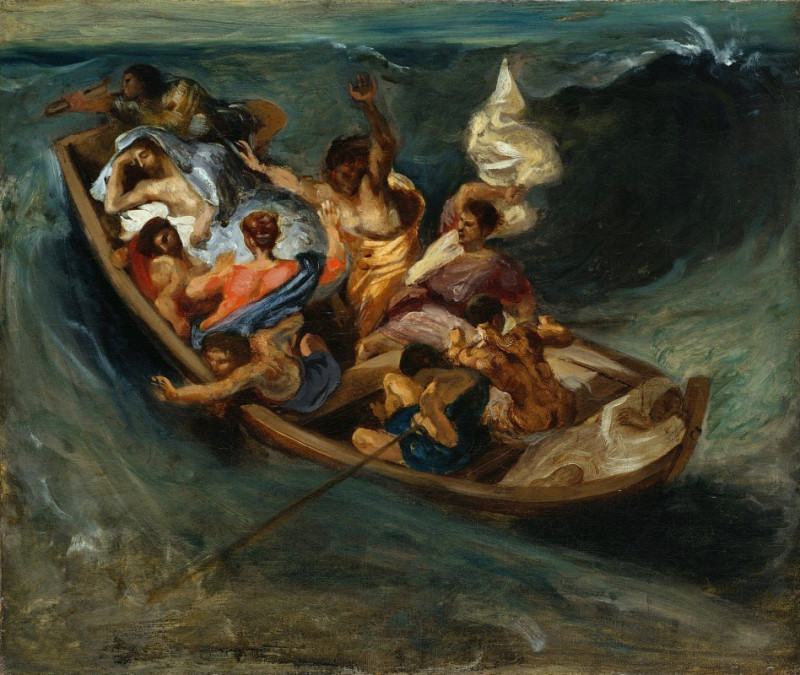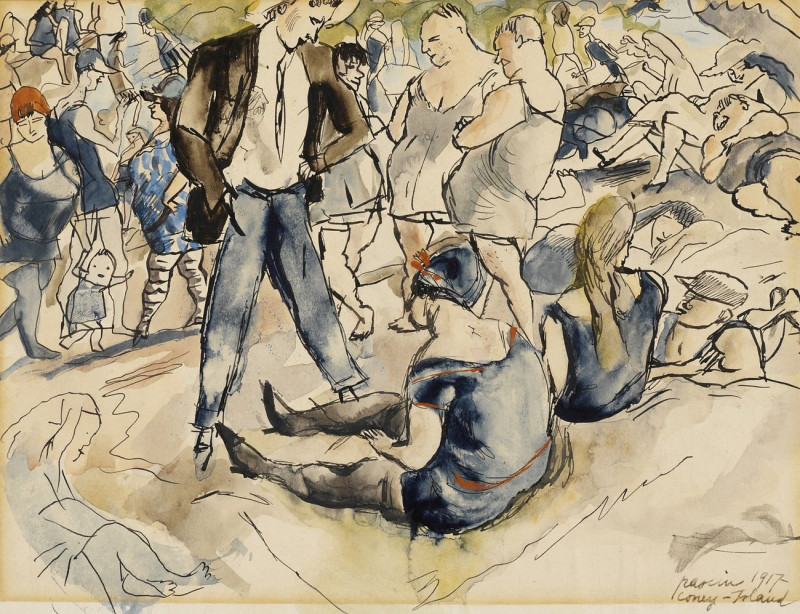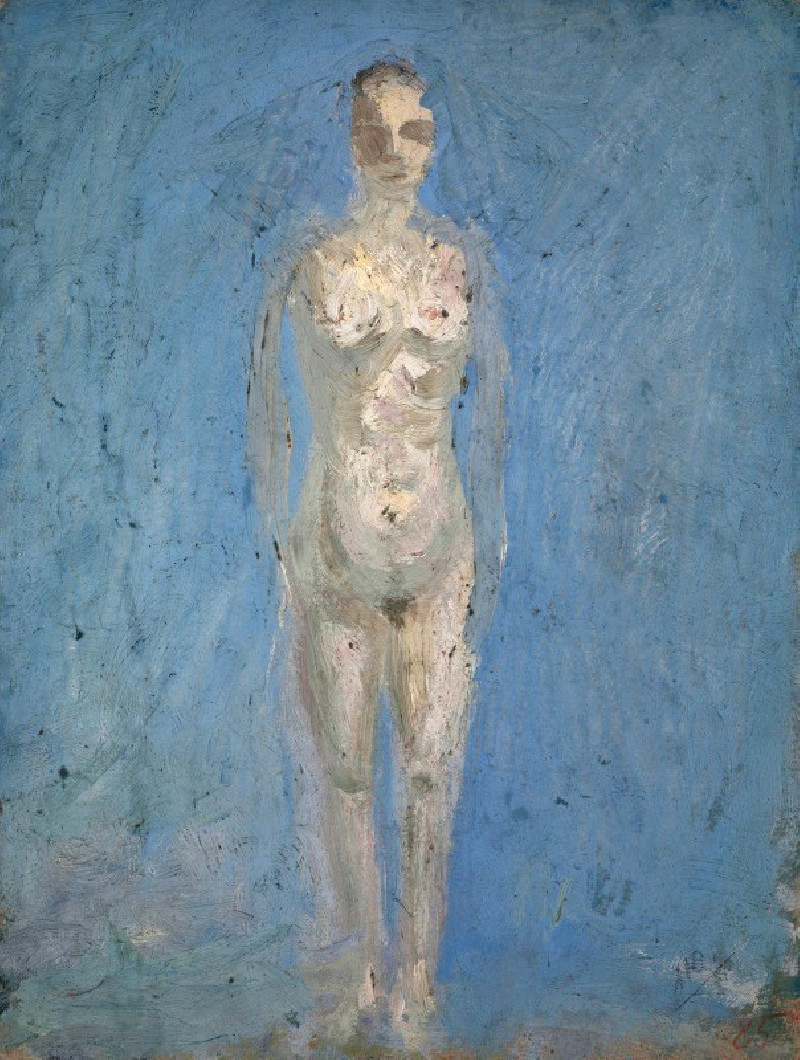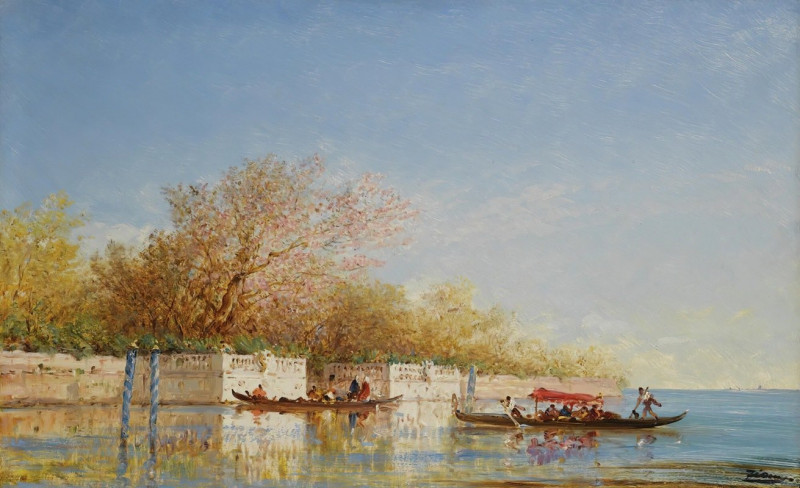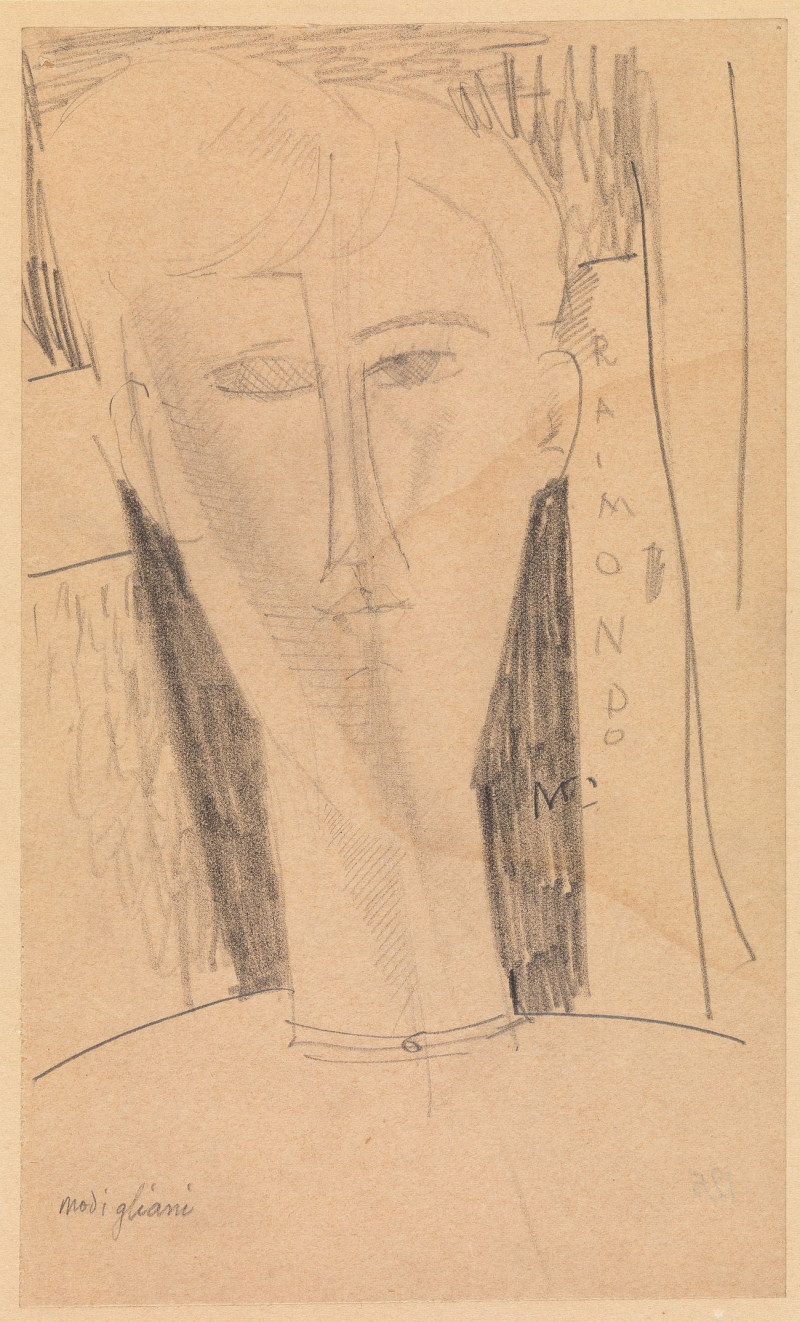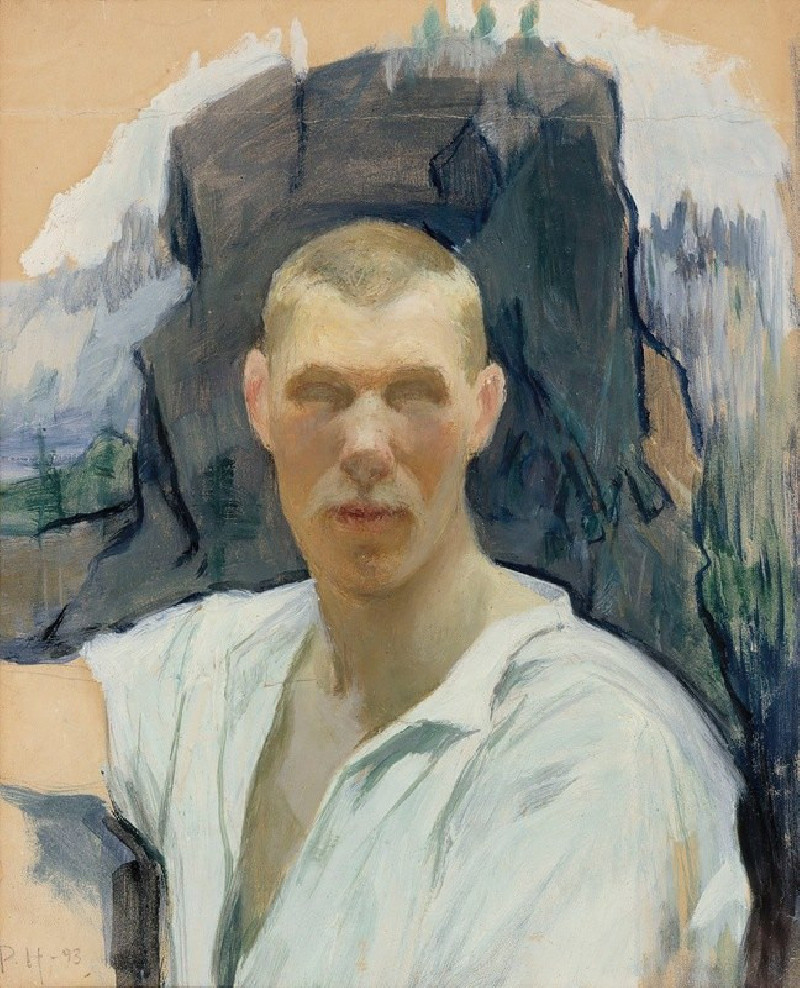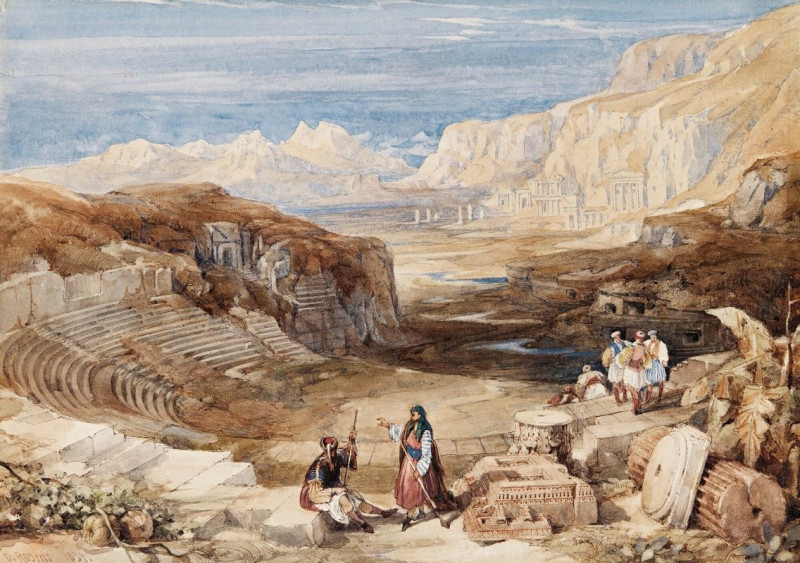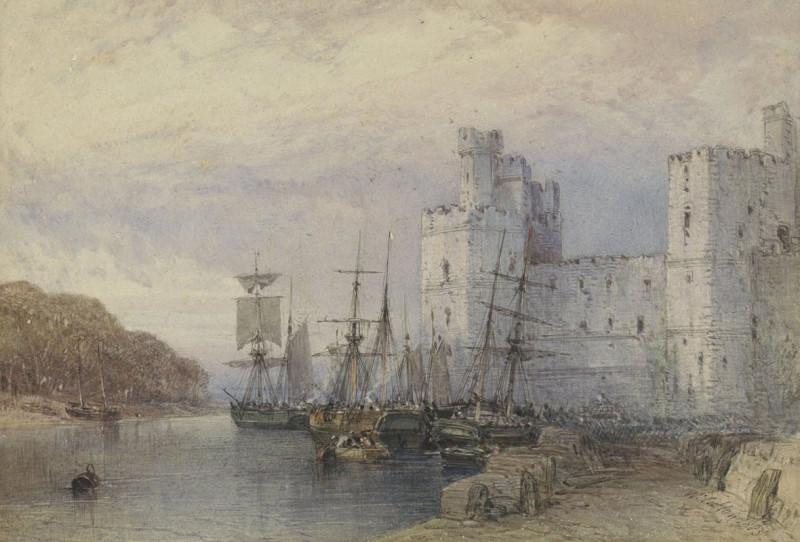Al Conde Palatino. (To the Count Palatine [or] Count of the Palate) (1796-1797)
More about this artwork
Delivery
Reproductions are made to order and take 5 to 7 working days.
We send them out by courier and delivery takes another two working days.
If you need a reproduction sooner, please contact us - we can usually find a solution and produce it a little faster.
If you don't want to pay for postage, you can pick up your paintings at our galleries in Kaunas or Vilnius.
Returns
Yes, reproductions can be returned.
If you have any doubts more than 30 days after the date of purchase, please contact us - we will take the reproduction back for a refund or offer you a replacement!
We accept a maximum of two returns per customer - please note that we make reproductions to order, so please choose responsibly.
We do not refund shipping expenses.
Francisco José de Goya y Lucientes (30 March 1746 – 16 April 1828) was a Spanish romantic painter and printmaker. He is considered the most important Spanish artist of the late 18th and early 19th centuries. His paintings, drawings, and engravings reflected contemporary historical upheavals and influenced important 19th- and 20th-century painters. Goya is often referred to as the last of the Old Masters and the first of the moderns.

![Al Conde Palatino. (To the Count Palatine [or] Count of the Palate) (1796-1797) reproduction of painting by Francisco de Goya... Al Conde Palatino. (To the Count Palatine [or] Count of the Palate) (1796-1797) reproduction of painting by Francisco de Goya...](https://reprodukcijos.lt/37048-large_default/reproduction-of-al-conde-palatino-to-the-count-palatine-or-count-of-the-palate-1796-1797.jpg)
